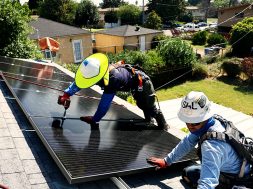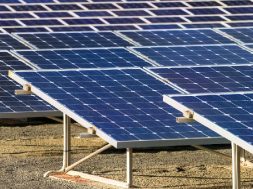
Telecos reducing carbon footprint: Erratic grid supply drags clean plan
Even though the telecom sector is working towards reduction of its carbon footprint by cutting down on fuel consumption from its active and passive infrastructure, the woes of the country’s power sector have kept mobile companies from reducing their dependence on diesel generator sets. According to responses by service providers and infrastructure firms documented in a consultation paper on Approach Towards Sustainable Telecommunications, floated by the Telecom Regulatory Authority of India (Trai), operational challenges for deployment of renewable energy technology, and the requirement for continuous uptime of telecom networks require companies to utilise diesel sets.
In 2012, the Department of Telecommunications (DoT), based on Trai’s recommendations, issued guidelines for telecom operators mandating at least 50 per cent of rural towers and 20 per cent of urban towers to run on hybrid energy — renewable energy technologies (RET) along with grid power by 2015, and 75 per cent of rural towers and 33 per cent of urban towers by 2020. To develop a comprehensive programme for mobilising RET deployment in telecom sector, DoT had also constituted an RET committee, which submitted its report in August 2014. These recommendations were further examined by a departmental committee which submitted its report in May 2015.
However, most operators suggested in their responses that while they had exceeded the yearly targets, it was operationally difficult to implement RET deployment at their sites. “Some of such constraints include, roof top towers, sensitive areas issues, nonstandard towers such as poles etc and other operational issues. Even out of the remaining towers, only around 50 per cent were found to be feasible commercially with very huge amount of CAPEX (capital expenditure) requirements making such deployments unsustainable for the operators,” Reliance Communications said in its response. In its consultation paper, Trai said that as of December 2016, only 90,000 of the 4,50,000 telecom towers were diesel free.
India’s largest telecom operator Bharti Airtel, in its response, said that it had “far exceeded” the targets set by DoT by reducing its carbon dioxide emissions, but this was done through a series of measures other than deployment of RET solutions. And while the telecom service providers were reducing dependence on fossil fuels, they ruled out complete independence from diesel for their infrastructure, considering the lack of availability of grid electricity throughout the geography of the country.
The Cellular Operators Association of India (COAI) said that on account of erratic and inadequate electricity supply, the dependency on diesel by operators continued to be there. “Wherever possible, rechargeable batteries are preferred. However, use of rechargeable batteries too is largely dependent on electricity supply from the grid which unfortunately is inadequate and erratic, especially in rural areas. It may thus be appreciated that most often, companies have no choice but to depend on diesel supply in order to ensure uninterrupted service to consumers,” COAI noted in its letter to Trai.
Reliance Communications also said: “As per the licence conditions, a telecom operator needs to maintain a network availability higher than 99.5 per cent. To ensure this benchmark, there is a need of availability of 24×7 power supply at all areas of operations; however, the same is not available.” The Trai paper noted that a 15 KVA diesel generator set consumes 3 litres of diesel per hour, and 1 litre of diesel emits 2.629 kg of carbon dioxide.
Network equipment maker Ericsson also concurred with the need to improve the availability of consistent grid power at cell sites, considering that carbon footprint was directly linked to diesel consumption, which in turn, was related to availability of grid power. Interestingly in its response, Ericsson also drew a parallel between rising data traffic, and increasing energy consumption by networks, based on a case study in Sweden. Trai also highlighted the fact that with 3G becoming pervasive, the energy demand was likely to increase by at least two-three folds considering data transfer would consume more energy and the introduction of 4G, “with a speed transfer rate 10 times higher than the 3G, would further substantially increase the energy consumption patterns of the telecom sector”.
Some of the stakeholders also suggested to Trai that the emissions from diesel in telecom sector needed to be viewed in proportion to the data traffic on the networks of these operators, and not subscribers, or sites. To calculate the average carbon footprint of the sector, Trai has proposed three options where the total carbon emission could be averaged out over three factors — total number of subscribers, total number of unique subscribers, or total amount of traffic carried in exabytes. One exabyte is equal to 1 million terrabytes. “…given the increased take up of data, the averaging may be done on the basis the total amount of traffic carried by the network,” Vodafone India said in its response.
On the electricity generated by a RET project, which is funded or maintained by a telecom service provider, also being used for community, some of the larger telecom players ruled out the option suggesting that telcos were not in the business of electricity generation, and they shouldn’t be involved with it. On the other hand, smaller players like Telenor said that in case a mobile company “decides to deploy an RET on his own volition, then, if electricity generated through RET is also used by the community and CSR purposes, same should be subtracted from the overall carbon emission” of all the firms available on that particular telecom site.
















